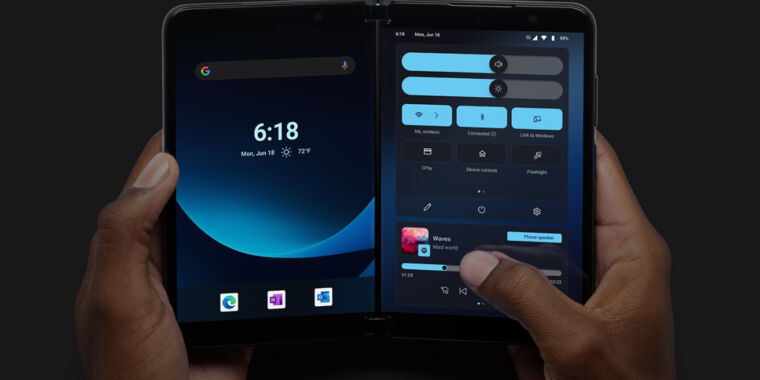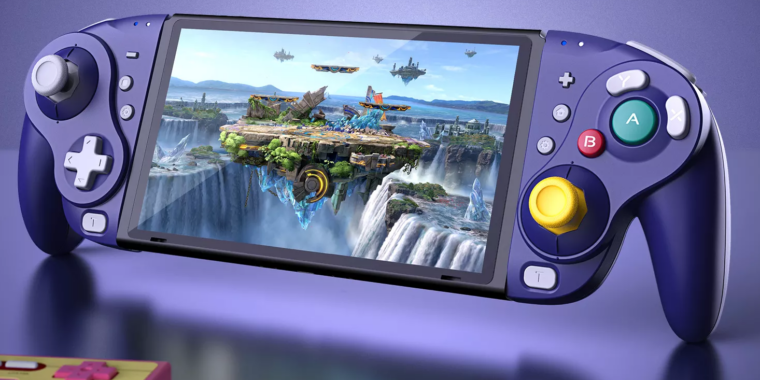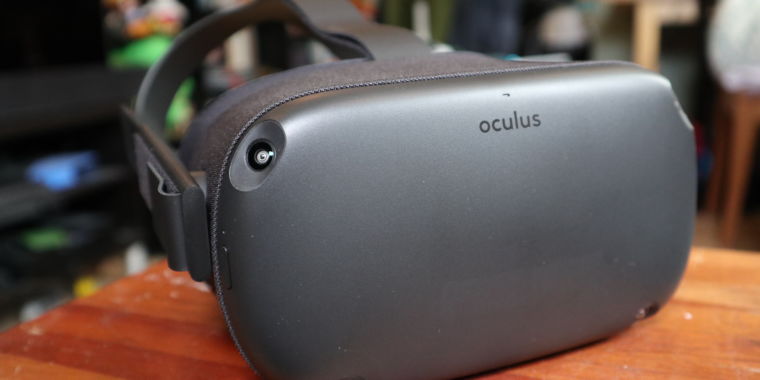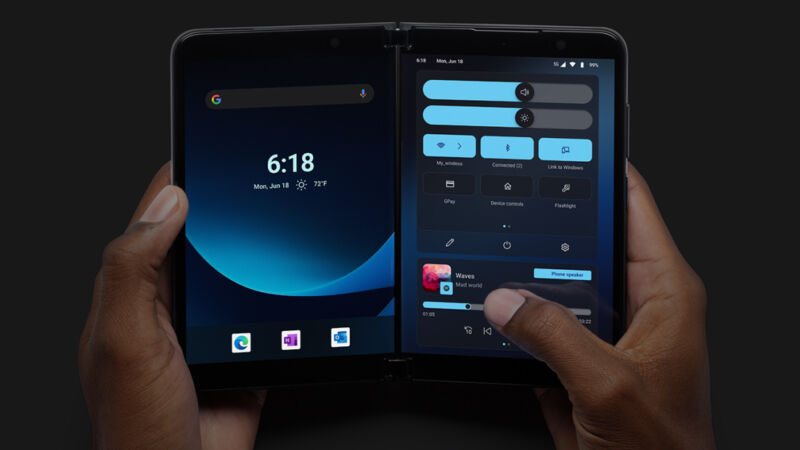
Microsoft
Windows Central’s Zac Bowden is the go-to reporter for any Microsoft Surface rumors, and his latest report is that Surface Duo 3 is dead, or at least, a device in the same mold as the Surface Duo 1 and 2 has been canceled. There might someday be a Microsoft device branded “Surface Duo 3,” but the Surface Duo form factor—a dual-screen device with a 360-degree hinge—is dead. The report says Microsoft is now working on a “more traditional foldable design, with a 180-degree hinge, internal foldable screen and external cover display”—so in the same vein as a Galaxy Fold.
The Surface Duo line made for two of the most awkward Android devices on the market. Instead of the tall, skinny displays that Android phones typically use, both Surface Duos used short, fat displays, making the Duo line the widest smartphones on the market. The original Surface Duo was planned to run the canceled “Windows 10x” OS, which would have taken advantage of the unique screen aspect ratio. When that OS was canceled, the project was salvaged as an Android phone, but those short, fat displays led to a lot of bad Android app layouts, with the limited vertical screen space further reduced by Android’s big headers and tab bars. It seems like Microsoft wanted to land on the same basic outline as a Moleskine notebook, but Android apps just aren’t designed for that aspect ratio. Plus, even when folded up, being dramatically wider than any other smartphone on the market also made it a literal pain to try to hold with one hand.
After two near-identical versions, Microsoft seemed to have been coming around to the “way too wide” line of thinking. The report says the canceled Surface Duo 3 would have had “narrower and taller edge-to-edge displays,” which would have put the phone in a more reasonable form factor.
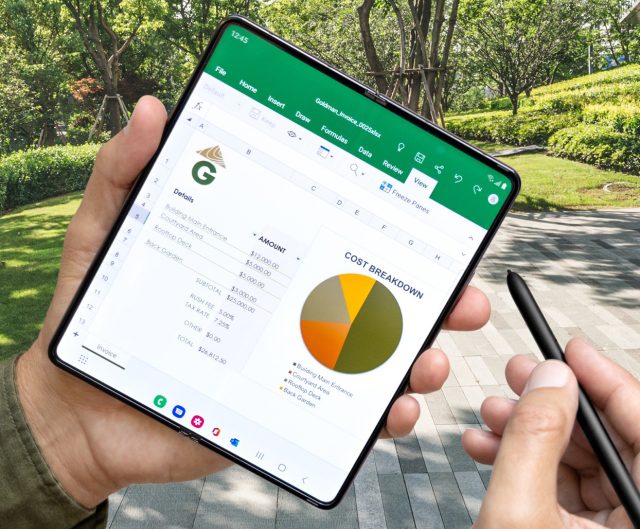
Samsung
With those plans dead, what is “considered a third-generation Duo internally” will be a more normal foldable smartphone, and it’s not clear if it will be branded “Surface Duo 3” or not. As we’ve argued in our review of the original device, outfitting the device with a continuous internal screen would be a big improvement over the dual-screen design. With one big foldable display, you could still get all of the dual-screen functionality via Android’s software split-screen mode but with the added benefit of also having one big screen for tablet apps, movies, games, and websites.
Besides the Android-incompatible form factor, Microsoft’s Android phones have had a host of other problems that the company will need to fix. The Surface Duos always felt like beta foldable devices, and that compromise might have worked if they weren’t the full price of a real foldable phone. The $1,400-$1,500 price tags were not competitive for what were basically two smartphones glued together, so you’ve got to wonder what is up with Microsoft’s supply chain. Microsoft’s Android software division has also been a hot mess, with the company outsourcing the Surface Duo 1 OS until two months before release and shipping a disastrously buggy build of Android as a result. Microsoft has since bought the team it was outsourcing its Android builds to, but so far, Surface Duo customers have seen a worst-in-class Android update record.
The report describes Microsoft as wanting to make its Android phone work better with Windows via an internal program called “Perfect Together” that is building Apple-style integrations between phone and laptops/desktops. Despite the failure of the Surface Duo, Bowden says that Microsoft is “all-in” with Android and “eager to expand its line of Android smartphone offerings” beyond the new foldable device. The report says Microsoft has prototyped several ideas for a “mainstream” slab-style Surface phone that might someday ship.
It sounds like we’ll be waiting a while for Microsoft’s next Android phone, with Bowden saying the foldable has “no concrete shipping window for the device in place yet either, meaning it’s unlikely to be ready in time for this fall.”

